Hydrangea quercifolia 'BIV01'
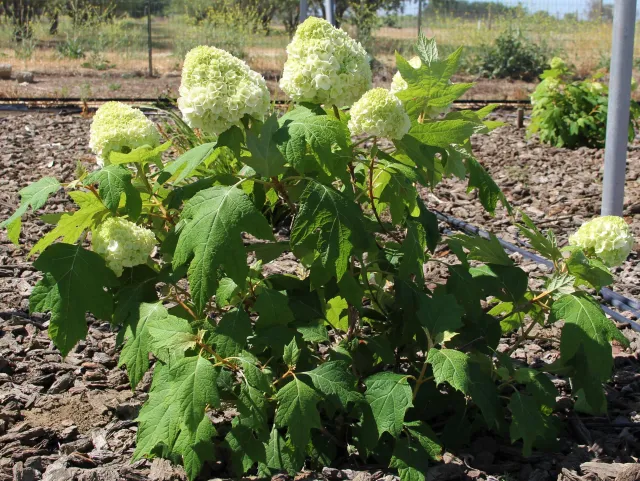
Summary
Tara™ is an oak-leaved hydrangea, a deciduous sub-shrub, that forms a relaxed mound. Deeply lobed leaves appeared in early spring followed in May by large, conical, double panicles of white blooms. These flowers fade first to pale green and then to a tawny brown and persist through fall. The buff-colored flower heads on hydrangeas are often viewed as a feature; as such, staff did not deadhead spent flowers. However, since Tara yielded good looking foliage right through the fall, some might prefer its looks as a foliage plant if deadheaded. In Davis, there were no significant irrigation treatment effects, and we therefore recommend irrigation on low water in WUCOLS Region 2.
The foliage on Tara™ may have suffered the effects of reclaimed water in Irvine. After leaves emerging and looking good through July, plants began to develop serious edge burn, especially on the two highest irrigation treatments, and never achieved quite acceptable appearance after July. Foliage was also negatively affected by chewing pests and many plants ended up looking ragged, despite their attractive blooms. It should also be noted that in both sites, during the hottest days, Tara had the habit of wilting slightly, though it would recover by the following morning. Because of its poor foliar response to the reclaimed water, we would not recommend Tara for this use. While there were statistical differences in the growth rates, there were no significant differences in aesthetic performance, so if higher quality water is used, we would recommend low water use for Tara in WUCOLS Region 3.
Basic Info
| Submitted by: | Sunset Western Garden Collection |
| Trial Exposure: | 50% Shade |
| Year evaluated: | 2020 |
Height & Width (after 2 years): | 23" x 33"- UC Davis 34" x 33" - SCREC |
Reported Height & Width (at maturity): | 72" x 72" |
| WUCOLS plant type: | S |
| Water Needs & WUCOLS Region: | Low - Region 2 Low - Region 3 |
Mean Overall Appearance rating: (1-5 Scale, 5 is highest) | 3.4 - UC Davis 2.9 - SCREC |
Flowering Months | May-Oct. - UC Davis May-Oct. - SCREC |
Growth and Quality Data
Click Here for Complete Data Set
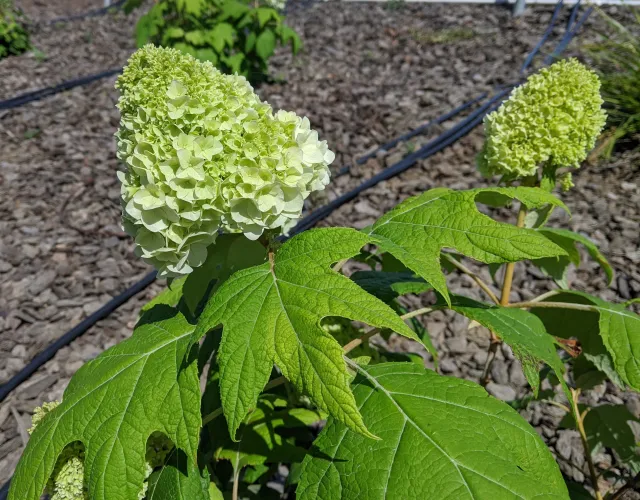
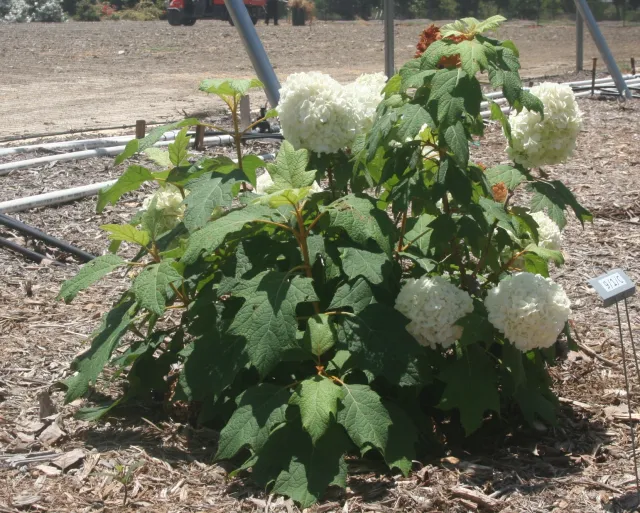
Hydrangea quercifolia 'BIV01' Tara™ on low water at South Coast REC in July 2020. Photo: D Martinez
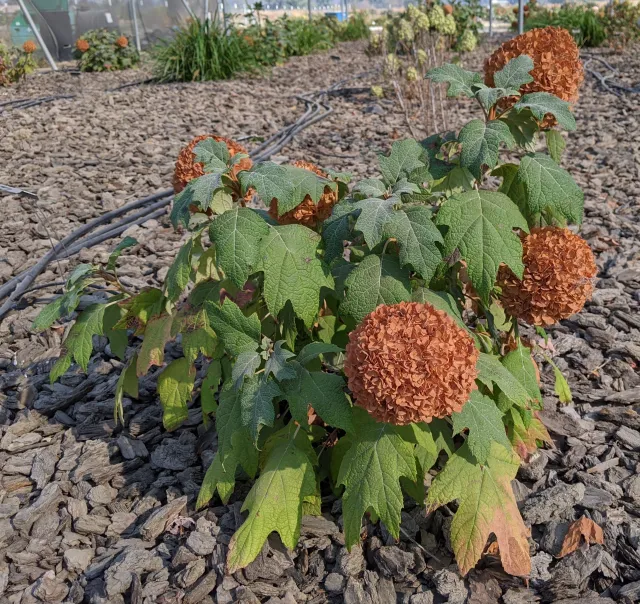
Hydrangea quercifolia 'BIV01' Tara™ in September on low water at UC Davis with foliage still attractive despite one or two leaves containing some brown spots. During really hot weather researchers observed the foliage of Tara become limp at mid-day before perking up when temperatures cooled down. Photo: J Sisneroz
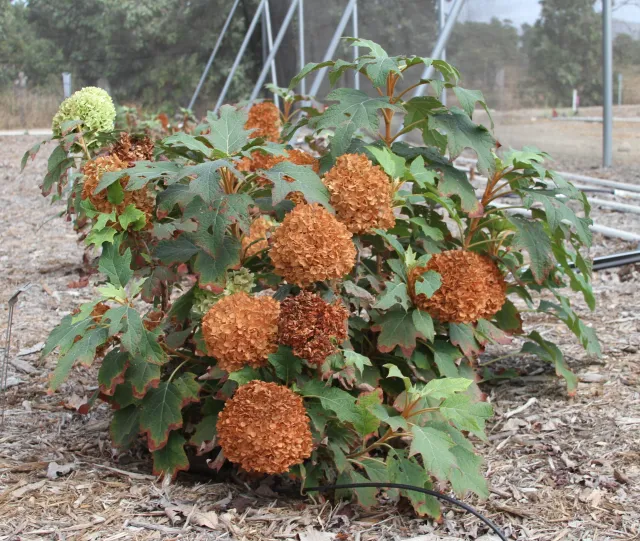
Hydrangea quercifolia 'BIV01' Tara™ on low water at South Coast REC in October, showing signs of accumulated salt burn on leaf edges from reclaimed water. New foliage (upper right) is still unaffected. Photo: D Martinez
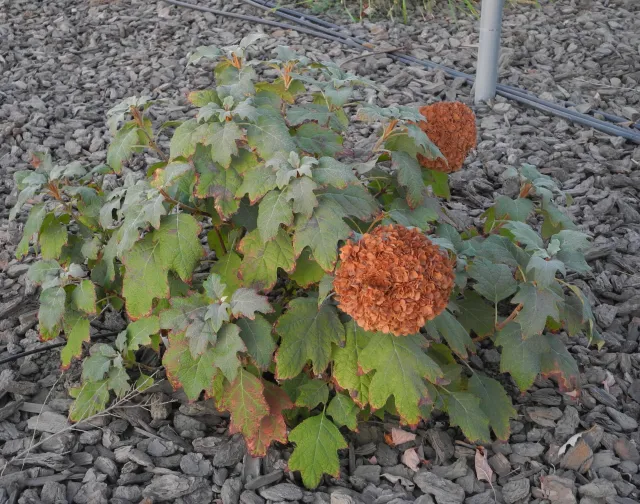
Hydrangea quercifolia 'BIV01' Tara™ in late October at UC Davis on low water. The oldest leaves show some tip burn and a few leaves are starting to change color. Eventually the foliage will change to rich Autumnal shades of red, orange, and purple before falling off when Tara™ enters dormancy. Photo: Jared Sisneroz
